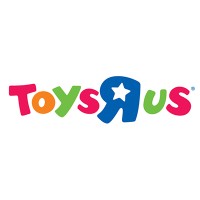Company Details
whole-foods-market
47,551
700,673
43
wholefoods.com
364
WHO_5192133
Completed

Whole Foods Market Company CyberSecurity Posture
wholefoods.comWhole Foods was founded in 1980 on the belief that where food comes from, and how it’s grown, matters. It meant creating quality standards, working with suppliers who achieve them, and sharing that information with our customers. And it radically changed the way people understood and shopped for food. The result has been the highest quality natural and organic products, an unmatched experience in more than 500+ stores, with a passionate team of over 90,000 team members, 5 percent of our total net profits given back to our communities each year, and millions of customers who put their trust in us every day.
Company Details
whole-foods-market
47,551
700,673
43
wholefoods.com
364
WHO_5192133
Completed
Between 750 and 799

 WFM Global Score (TPRM)
WFM Global Score (TPRM)XXXX

Description: Whole Foods Market chain Whole Foods Market Suffered Payment Card Breach. The security breach report states that thieves were able to obtain credit card details of patrons who made transactions at specific locations, such as full-service restaurants and taprooms inside some stores, without authorization. Whole Foods Market was notified of an incident in which payment card information used at select establishments like full-service restaurants and taprooms located within some locations was improperly accessed. The locations and total number of consumers affected by the attack remain unknown, as the company has not released any information about it.
Description: The California Office of the Attorney General disclosed a **data breach** at **Whole Foods Market Services, Inc.** in October 2017. The incident involved **unauthorized access to payment card information**, exposing transactions conducted between **March 10, 2017, and September 28, 2017**. The breach was detected on **September 23, 2017**, though the exact number of affected individuals was not specified. The compromised data included **customer payment details**, potentially enabling fraudulent activity. While the full scope of the breach remains unclear, the exposure of financial information poses risks to customer trust and financial security. The incident highlights vulnerabilities in payment processing systems, emphasizing the need for robust cybersecurity measures to prevent similar breaches in the future.


No incidents recorded for Whole Foods Market in 2025.
No incidents recorded for Whole Foods Market in 2025.
No incidents recorded for Whole Foods Market in 2025.
WFM cyber incidents detection timeline including parent company and subsidiaries

Whole Foods was founded in 1980 on the belief that where food comes from, and how it’s grown, matters. It meant creating quality standards, working with suppliers who achieve them, and sharing that information with our customers. And it radically changed the way people understood and shopped for food. The result has been the highest quality natural and organic products, an unmatched experience in more than 500+ stores, with a passionate team of over 90,000 team members, 5 percent of our total net profits given back to our communities each year, and millions of customers who put their trust in us every day.


At Next we never underestimate what we can do. Bring your energy, play to your strengths and never shy away from change. Push yourself and back others. Make things happen that will be bigger and better than before. Come and work for one of the UK’s biggest retailers. It is everything you could ima

Toys“R”Us is a beloved brand known all around the world—and we know how to have fun! For over 70 years we've been the toy authority and ambassadors of all things play. Our new vision looks beyond traditional retail for a re-imagined, immersive experience for kids of all ages. We've got a whole new w

Cencosud S.A. is a Chilean based multi-format retailer with operations in Argentina, Brazil, Chile, Colombia, Peru and a commercial office in China. Through its supermarket, home improvement, department stores, shopping centers and financial services divisions, the Company targets a wide range o

There’s something different about shopping at SPAR, that’s because we’ve created a culture of caring and community to ensure our customers have a consistently enjoyable shopping experience in a uniquely friendly and family orientated store. Nothing means more to us than our valued customers and we
It takes guts to start a business during the Great Depression. And it takes vision to keep it going. Our founder, Hendrik Meijer, opened Thrifty Acres in 1934. Almost thirty years later, his son, Fred, pioneered the world’s first ever supercenter – setting the table for who we are today: a multi-bil

Wesfarmers — a diversified corporation From its origins in 1914 as a Western Australian farmers' cooperative, Wesfarmers has grown into one of Australia's largest listed companies. With headquarters in Western Australia, its diverse business operations cover: home improvement and outdoor living; ap
Company Overview Headquartered in Knoxville, Tennessee, Pilot Flying J is the largest operator of travel centers in North America with more than 750 locations throughout the United States and Canada and employs more than 24,000 Team Members. Pilot Flying J services over a million guests every day.
At Chewy, our mission is to be the most trusted and convenient destination for pet parents and partners, everywhere. We view pets and pet parents as family and are obsessed with meeting their needs and exceeding customer expectations through every interaction. Behind the scenes, our talented teams

Lowe’s Companies, Inc. (NYSE: LOW) is a FORTUNE® 50 home improvement company serving approximately 20 million customers a week in the United States. Lowe’s and its related businesses operate or service more than 2,200 home improvement and hardware stores and employ over 300,000 associates. Based in
.png)
Today, Whole Foods Market's Trends Council unveiled the top food trends which they think will influence the food landscape in the coming...
The US Department of Homeland Security has shifted hundreds of national security specialists, including cyber personnel, into jobs that...
Attaullah Baig alleges that the social media giant fired him for raising security concerns about its WhatsApp messaging platform.
The food distributor and wholesaler completely shut down its systems upon discovering the attack last month, yet core systems were restored...
United Natural Foods, the main distributor to grocery chain Whole Foods Market, is bracing for a financial hit from a cyberattack detected June 5.
The company, which supplies Whole Foods and other grocery stores nationwide, had to disable electronic ordering systems while responding to...
On June 5, 2025, a cyberattack forced United Natural Foods Inc., the primary distributor for Whole Foods Market, to shut down its systems...
PARK CITY, Utah (AP) — Shoppers at the Whole Foods Market in Park City are encountering empty shelves this week as the effects of a June 5...
The distributor said it is still relying on manual processes to fulfill orders as it works to bring its systems back online after an...

Explore insights on cybersecurity incidents, risk posture, and Rankiteo's assessments.
The official website of Whole Foods Market is http://www.wholefoodsmarket.com/careers.
According to Rankiteo, Whole Foods Market’s AI-generated cybersecurity score is 771, reflecting their Fair security posture.
According to Rankiteo, Whole Foods Market currently holds 0 security badges, indicating that no recognized compliance certifications are currently verified for the organization.
According to Rankiteo, Whole Foods Market is not certified under SOC 2 Type 1.
According to Rankiteo, Whole Foods Market does not hold a SOC 2 Type 2 certification.
According to Rankiteo, Whole Foods Market is not listed as GDPR compliant.
According to Rankiteo, Whole Foods Market does not currently maintain PCI DSS compliance.
According to Rankiteo, Whole Foods Market is not compliant with HIPAA regulations.
According to Rankiteo,Whole Foods Market is not certified under ISO 27001, indicating the absence of a formally recognized information security management framework.
Whole Foods Market operates primarily in the Retail industry.
Whole Foods Market employs approximately 47,551 people worldwide.
Whole Foods Market presently has no subsidiaries across any sectors.
Whole Foods Market’s official LinkedIn profile has approximately 700,673 followers.
Whole Foods Market is classified under the NAICS code 43, which corresponds to Retail Trade.
No, Whole Foods Market does not have a profile on Crunchbase.
Yes, Whole Foods Market maintains an official LinkedIn profile, which is actively utilized for branding and talent engagement, which can be accessed here: https://www.linkedin.com/company/whole-foods-market.
As of November 27, 2025, Rankiteo reports that Whole Foods Market has experienced 2 cybersecurity incidents.
Whole Foods Market has an estimated 15,247 peer or competitor companies worldwide.
Incident Types: The types of cybersecurity incidents that have occurred include Breach.
Detection and Response: The company detects and responds to cybersecurity incidents through an communication strategy with public disclosure via california office of the attorney general..
Title: Whole Foods Market Payment Card Breach
Description: Whole Foods Market chain suffered a payment card breach where thieves obtained credit card details of patrons who made transactions at specific locations, such as full-service restaurants and taprooms inside some stores, without authorization.
Type: Data Breach
Attack Vector: Payment Card Systems
Threat Actor: Thieves
Motivation: Financial Gain
Title: Whole Foods Market Data Breach (2017)
Description: The California Office of the Attorney General reported a data breach involving Whole Foods Market Services, Inc. on October 20, 2017. The breach involved unauthorized access to payment card information and was discovered on September 23, 2017. It affected transactions conducted between March 10, 2017, and September 28, 2017. The number of individuals affected remains unknown.
Date Detected: 2017-09-23
Date Publicly Disclosed: 2017-10-20
Type: Data Breach
Common Attack Types: The most common types of attacks the company has faced is Breach.

Data Compromised: Payment card information
Systems Affected: Payment Card Systems
Payment Information Risk: High

Data Compromised: Payment card information
Identity Theft Risk: Potential (due to payment card exposure)
Payment Information Risk: High
Commonly Compromised Data Types: The types of data most commonly compromised in incidents are Payment Card Information, and Payment card information.

Entity Name: Whole Foods Market
Entity Type: Retail
Industry: Grocery

Entity Name: Whole Foods Market Services, Inc.
Entity Type: Retail
Industry: Grocery/Supermarket
Location: California, USA (headquartered in Austin, Texas)
Customers Affected: Unknown

Communication Strategy: Public disclosure via California Office of the Attorney General

Type of Data Compromised: Payment card information
Sensitivity of Data: High

Type of Data Compromised: Payment card information
Number of Records Exposed: Unknown
Sensitivity of Data: High
Data Exfiltration: Likely (unauthorized access confirmed)

Regulations Violated: Potential violation of California data breach notification laws (e.g., CCPA precursor),
Regulatory Notifications: California Office of the Attorney General

Source: California Office of the Attorney General
Additional Resources: Stakeholders can find additional resources on cybersecurity best practices at and Source: California Office of the Attorney General.
Communication of Investigation Status: The company communicates the status of incident investigations to stakeholders through Public disclosure via California Office of the Attorney General.
Last Attacking Group: The attacking group in the last incident was an Thieves.
Most Recent Incident Detected: The most recent incident detected was on 2017-09-23.
Most Recent Incident Publicly Disclosed: The most recent incident publicly disclosed was on 2017-10-20.
Most Significant Data Compromised: The most significant data compromised in an incident were Payment Card Information, , Payment card information and .
Most Significant System Affected: The most significant system affected in an incident was Payment Card Systems.
Most Sensitive Data Compromised: The most sensitive data compromised in a breach were Payment card information and Payment Card Information.
Number of Records Exposed in Most Significant Breach: The number of records exposed in the most significant breach was 0.
Most Recent Source: The most recent source of information about an incident is California Office of the Attorney General.
.png)
Angular is a development platform for building mobile and desktop web applications using TypeScript/JavaScript and other languages. Prior to versions 19.2.16, 20.3.14, and 21.0.1, there is a XSRF token leakage via protocol-relative URLs in angular HTTP clients. The vulnerability is a Credential Leak by App Logic that leads to the unauthorized disclosure of the Cross-Site Request Forgery (XSRF) token to an attacker-controlled domain. Angular's HttpClient has a built-in XSRF protection mechanism that works by checking if a request URL starts with a protocol (http:// or https://) to determine if it is cross-origin. If the URL starts with protocol-relative URL (//), it is incorrectly treated as a same-origin request, and the XSRF token is automatically added to the X-XSRF-TOKEN header. This issue has been patched in versions 19.2.16, 20.3.14, and 21.0.1. A workaround for this issue involves avoiding using protocol-relative URLs (URLs starting with //) in HttpClient requests. All backend communication URLs should be hardcoded as relative paths (starting with a single /) or fully qualified, trusted absolute URLs.
Forge (also called `node-forge`) is a native implementation of Transport Layer Security in JavaScript. An Uncontrolled Recursion vulnerability in node-forge versions 1.3.1 and below enables remote, unauthenticated attackers to craft deep ASN.1 structures that trigger unbounded recursive parsing. This leads to a Denial-of-Service (DoS) via stack exhaustion when parsing untrusted DER inputs. This issue has been patched in version 1.3.2.
Forge (also called `node-forge`) is a native implementation of Transport Layer Security in JavaScript. An Integer Overflow vulnerability in node-forge versions 1.3.1 and below enables remote, unauthenticated attackers to craft ASN.1 structures containing OIDs with oversized arcs. These arcs may be decoded as smaller, trusted OIDs due to 32-bit bitwise truncation, enabling the bypass of downstream OID-based security decisions. This issue has been patched in version 1.3.2.
Suricata is a network IDS, IPS and NSM engine developed by the OISF (Open Information Security Foundation) and the Suricata community. Prior to versions 7.0.13 and 8.0.2, working with large buffers in Lua scripts can lead to a stack overflow. Users of Lua rules and output scripts may be affected when working with large buffers. This includes a rule passing a large buffer to a Lua script. This issue has been patched in versions 7.0.13 and 8.0.2. A workaround for this issue involves disabling Lua rules and output scripts, or making sure limits, such as stream.depth.reassembly and HTTP response body limits (response-body-limit), are set to less than half the stack size.
Suricata is a network IDS, IPS and NSM engine developed by the OISF (Open Information Security Foundation) and the Suricata community. In versions from 8.0.0 to before 8.0.2, a NULL dereference can occur when the entropy keyword is used in conjunction with base64_data. This issue has been patched in version 8.0.2. A workaround involves disabling rules that use entropy in conjunction with base64_data.

Get company history
















Every week, Rankiteo analyzes billions of signals to give organizations a sharper, faster view of emerging risks. With deeper, more actionable intelligence at their fingertips, security teams can outpace threat actors, respond instantly to Zero-Day attacks, and dramatically shrink their risk exposure window.
Identify exposed access points, detect misconfigured SSL certificates, and uncover vulnerabilities across the network infrastructure.
Gain visibility into the software components used within an organization to detect vulnerabilities, manage risk, and ensure supply chain security.
Monitor and manage all IT assets and their configurations to ensure accurate, real-time visibility across the company's technology environment.
Leverage real-time insights on active threats, malware campaigns, and emerging vulnerabilities to proactively defend against evolving cyberattacks.




